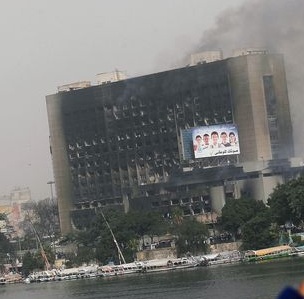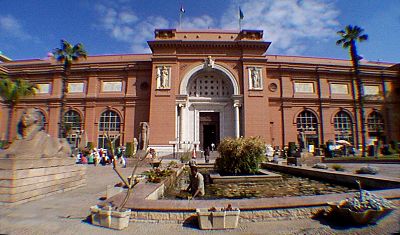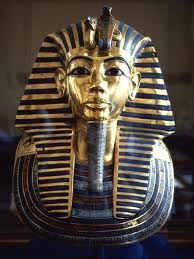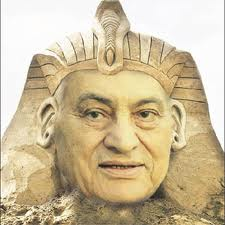

|
|
|
|
|
|
EGY.COM - PROBLEMS & ISSUES
|
|


The cataclysmic events that took place in Egypt during the week of 25-31 January 2011 could be encapsulated by two landmark buildings standing side by side off Tahrir Square.
The older building is the grand Egyptian Antiquities Museum inaugurated in 1902 during the reign of Khedive Abbas Hilmi II when Egypt’s cultural, social and economic development were at their zenith. The much younger building meanwhile, was built during the Nasser era to house the Soviet-style Arab Socialist Union or Itihad Ishtaraki which epitomized that period’s authoritarian regime. Years later, during Hosni Mubarak’s 30-year reign, that same building became the headquarters of the National Democratic Party (NDP) headed by Egypt’s president with his younger son Gamal as one of its principle heavyweights.
Now let’s look at what took place on Friday 28 January also known as 'the day of rage', when the state’s gigantic security apparatus attempted to suppress pro-democracy campaigners -- Egypt’s youthful Facebook activists as they are often referred to.
Following Friday prayers, and in the confusion brought on by disproportionate police brutality in which many activists lost their lives, the headquarters of the National Democratic Party was torched. While the how and why are yet to be determined, the symbolism was not lost on the watching nation. The great modern pyramid housing the ruling party, which weeks earlier had claimed a 92% victory in recent legislative elections, had just gone up in flames. Yet no one rose to its defense. No one tried to put out the fire despite its proximity to the Father of all Rivers. And with firefighters nowhere in sight, the once sacred building was left to sizzle. Onlookers, whether in Tahrir Square or in front of their TV screens, cheered.
The despised ruling party that had suppressed liberty, democracy and pluralism for the last two decades was symbolically dead. Gone too was the bastion of corruption run by the gang of sons with Gamal Mubarak at its center. Notwithstanding repeated claims that Mubarak Jr. was the face of Egypt’s youth, his fawning groupies failed to defend his shrine. Not unlike the repressive Egyptian security forces that, all of a sudden, vanished from the face of the earth, the party faithful had also melted away.
A few meters from the ruling party headquarters stands the century old Egyptian Museum which was now threatened by approaching fire with the concomitant looting and pillaging. Yet what happened in the evening of January 28 shall forever remain a tribute to Egypt’s pro-democracy protestors. Sensing danger, men and women of all ages quickly formed a human chain surrounding the Museum’s perimeter forbidding anyone from entering or exiting thus averting a catastrophe of gigantic proportions. Braving the elements they produced makeshift buckets, water bottles and blankets ready to dose or stifle any flying debris that could harm the centennial building.
Against all odds and regardless of the regime's thugs, Egypt’s youth rose to the occasion risking their lives to safeguard the temple of civilization as opposed to its nearby anti-thesis, the temple of doom. With only their bodies as shields, they protected the world’s largest depository of ancient civilization with its affiliated treasures. They single-handedly defended the irreplaceable legacy of their forefathers.
Egypt’s budding activists had gotten their priorities right, favoring real Pharaohs over their fake 21st century replicas!


for 25 January 2011 photos and U-tubes click tahrir.art
|
|
|
|